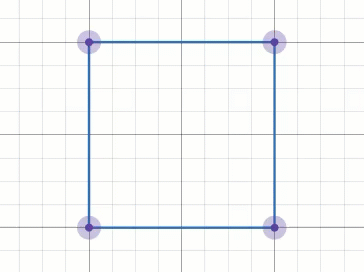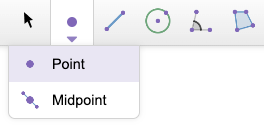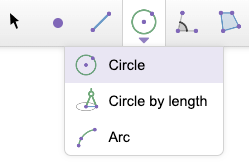Go to desmos.com/geometry.
You have five minutes to play and familiarize yourself with the tools at the top.
Now please sketch a square using the tools. Call me over when you have it.
(I suggest they turn on the grid—click the wrench icon 🔧 in the top right.)
Whoever calls you over faces the drag test. You click a corner of their “square” and drag. If the shape falls apart, you just say, Sorry, try again, and walk away.
After a few of those, the class starts to catch on. What they’ve created only looks like a square. You pause and get everyone’s attention:
Make sure your square passes the drag test. That means, no matter which corner I click and drag, it should still behave like a square.
They now start thinking more critically: What actually makes a square a square? Four equal sides. Four right angles.
Check out the sub-tools under each tool. There’s more there.
Let them explore. Let them ask questions. Let them get frustrated and figure it out.
With about 10 minutes left in class, the teams who’ve figured out how to construct a true square get a new challenge: Construct a trapezoid.
I say the words explore and play constantly in class—because I mean it. No, that’s not a waste of time. That’s how students begin to own their learning. I’ve given them a prompt; now it’s my turn to step back and just answer their questions. By the time I gather them again to guide them, I can say construct a circle and they know what to do. I can say draw in a radius without ten hands shooting up in confusion. The time they spent on their own, alongside their peers, was valuable think time and doing time.
For the rest of the class, you walk them through a square construction. And yes, you remind them—a true construction means using only two tools: a compass and a straightedge. Just because we’re doing this digitally with Desmos Geometry doesn’t mean the rule changes.
Let’s begin by constructing a circle!











